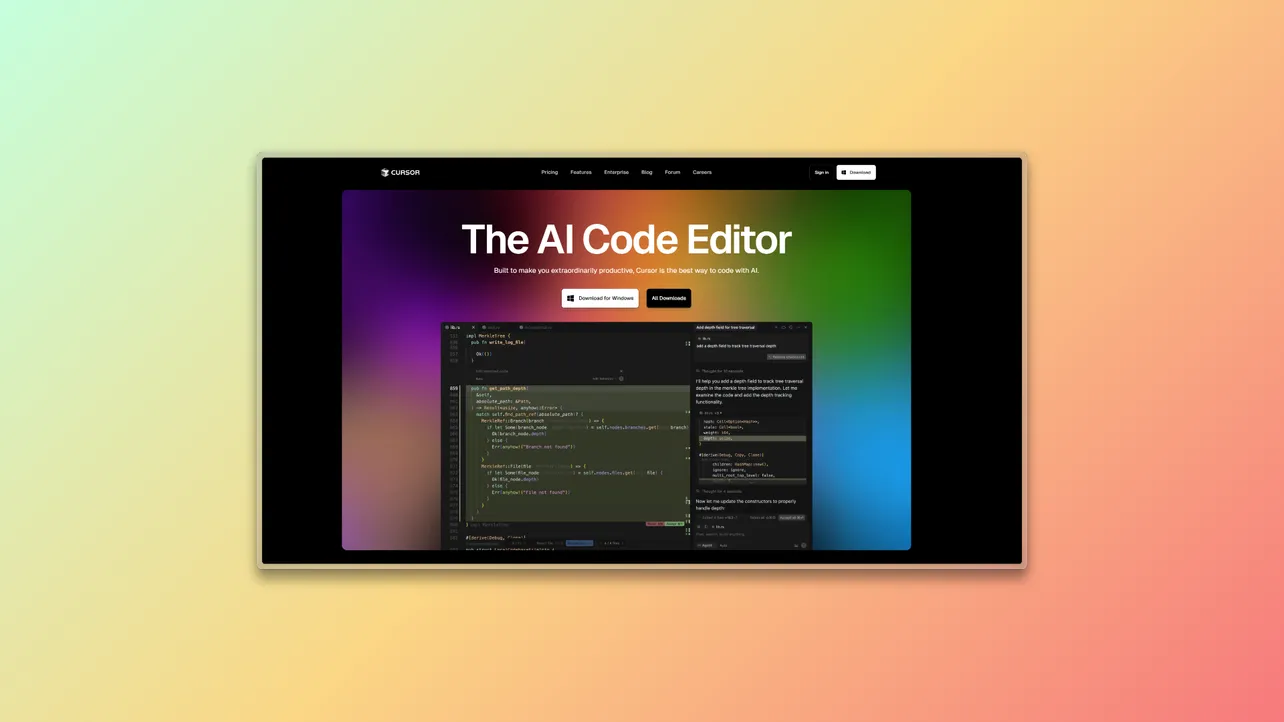If Devin’s trying to be your AI teammate, Cursor is more like your AI sidekick.
It doesn’t try to replace your brain or write your whole codebase for you, it just sits quietly in your editor and helps you think faster, spot issues, and move things forward.
Cursor is a fork of VS Code, rebuilt around AI-first workflows. It looks familiar, feels fast, and doesn’t try to reinvent the entire dev experience. But it adds a few things that make you wonder how you managed without it.
What does Cursor actually do?
Cursor is an IDE with AI wired straight into your workflow. You highlight a block of code, right-click, and ask it to refactor. Or fix a bug. Or write a test. It’ll do it inline, right there in the file.
It supports:
- inline edits
- custom prompts
- doc generation
- tests
- multi-file understanding
- terminal integration
The AI models behind it (Claude, GPT-4, etc.) are powerful, but Cursor adds structure around them, so you're not just prompting in a text box. You’re working in context, with files, folders, and code you already know.
It also tracks your project history and lets you ask questions like “what does this function connect to?” and it’ll pull that info from your actual codebase, not just some abstract guess.
Pricing
Cursor has a clean pricing model:
- Free: 50 AI responses/day
- Pro – $20/month: Unlimited usage, better models
- Team – $40/month per seat: Shared context, team chat, etc.
Most indie devs stick to Pro. Teams working on the same codebase will benefit from the shared memory features in the Team plan.
What people are saying
Cursor’s got fans. It’s fast, native, and doesn’t interrupt your flow.
“Cursor’s the first time AI in my editor didn’t feel like a toy. I highlight code, it does what I need, then I keep going.” - @codekraken
“I switched from Copilot to Cursor in a day. The difference is night and day when you’re working in files, not just writing small snippets.” - @jenbitescode
“It’s not magic, but it’s close. Cursor’s great at filling in the boring bits and making sure I don’t miss obvious bugs.” - @theindiesweater
It’s not perfect. Some say the models can hallucinate fixes if you're not specific enough. Others wish it handled large projects with complex build systems better. But compared to older-gen AI tools, it’s a big leap forward.
Should you use it for vibe coding?
Yes, Cursor’s pretty much made for it.
If vibe coding means building fast, iterating on ideas, and skipping boilerplate, Cursor fits right in. It’s less of a “give me a full app” tool and more of a “help me move faster without stopping to Google every five minutes” tool.
Use it when:
- You're refactoring spaghetti
- You're building a quick prototype
- You want AI to review your work, not write it for you
- You just want to stay in flow
How Does it Compare?
| Tool | Positioning | Best For | Pricing |
|---|---|---|---|
| Devin | Autonomous AI engineer | Large-scale refactoring & grunt work | $20–$40/mo |
| Cursor | AI-first code editor | Daily dev work, debugging, refactors | $20–$40/mo |
| GitHub Copilot | Autocomplete + AI pair programmer | Typing speed-up & boilerplate | $10–$19/mo |
| Sweep | PR ticket taker | GitHub ticket automation | Free – $30/mo |
| CodexCLI | Chat in your terminal | Running, editing, and debugging in-shell | TBD |
| Roo Code | Open-source AI assistant | Writing and refactoring local projects | Free |
| bolt.new | Prompt an app into existence | Full-stack app generation and deploy | Free – $29/mo |
| Sourcery | Python refactoring tool | Improving readability and performance | Free – $12/mo |



